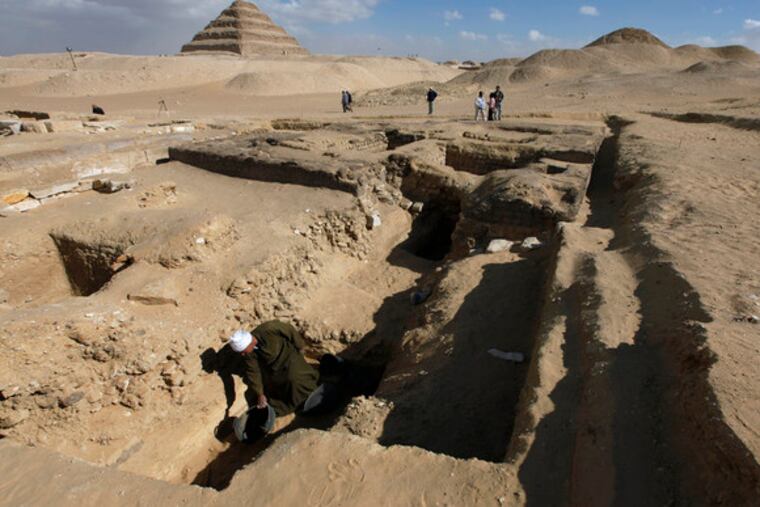Tomb find hints of more in Egypt
The sprawling cemetery region could be even bigger than thought, experts say.

SAQQARA, Egypt - A pair of 4,300-year-old pharaonic tombs discovered at Saqqara indicate that the sprawling necropolis south of Cairo is even larger than previously thought, Egypt's top archaeologist said yesterday.
The rock-cut tombs were built for high-level officials - one responsible for the quarries used to build the nearby pyramids, and another a woman in charge of procuring entertainers for the pharaohs.
The top archaeologist, Zahi Hawass, said the discovery indicates there is even more to the vast necropolis of Saqqara, 12 miles south of Cairo. The newly discovered tombs are the beginning of a large cemetery, he said.
Past excavations have focused on just one side of the two nearby pyramids - the Step Pyramid of King Djoser and that of Unas, the last king of the Fifth Dynasty. The area where the two tombs were found, to the southwest, has been largely untouched.
Further finds should shed light on the Fifth and Sixth Dynasties of the Old Kingdom, which ruled more than 4,000 years ago, said Hawass, who heads Egypt's Supreme Council of Antiquities and earned his doctorate in archaeology from the University of Pennsylvania.
One of the tombs, about a yard wide and 2.75 yards long, has a description above the entrance about Yaamat, the man for whom it was built. The second tomb is twice the size and includes inscriptions and an image of a seated woman.
Aidan Dodson, a research fellow at the University of Bristol's Department of Archaeology and Anthropology in England, who was not involved in the dig, said that while the tombs themselves aren't especially significant, the possibility of a much larger cemetery is.
"It shows that the blank areas of the maps of Saqqara aren't really empty at all," he said. "It's just that archaeologists haven't got around to digging them."
Excavations have been going on at Saqqara for about 150 years, uncovering a vast necropolis of pyramids, tombs and funerary complexes mostly from the Old Kingdom, but also including sites as recent as the Roman era.
But new finds are constantly being made. According to Hawass, only 30 percent of Egypt's monuments have been uncovered.